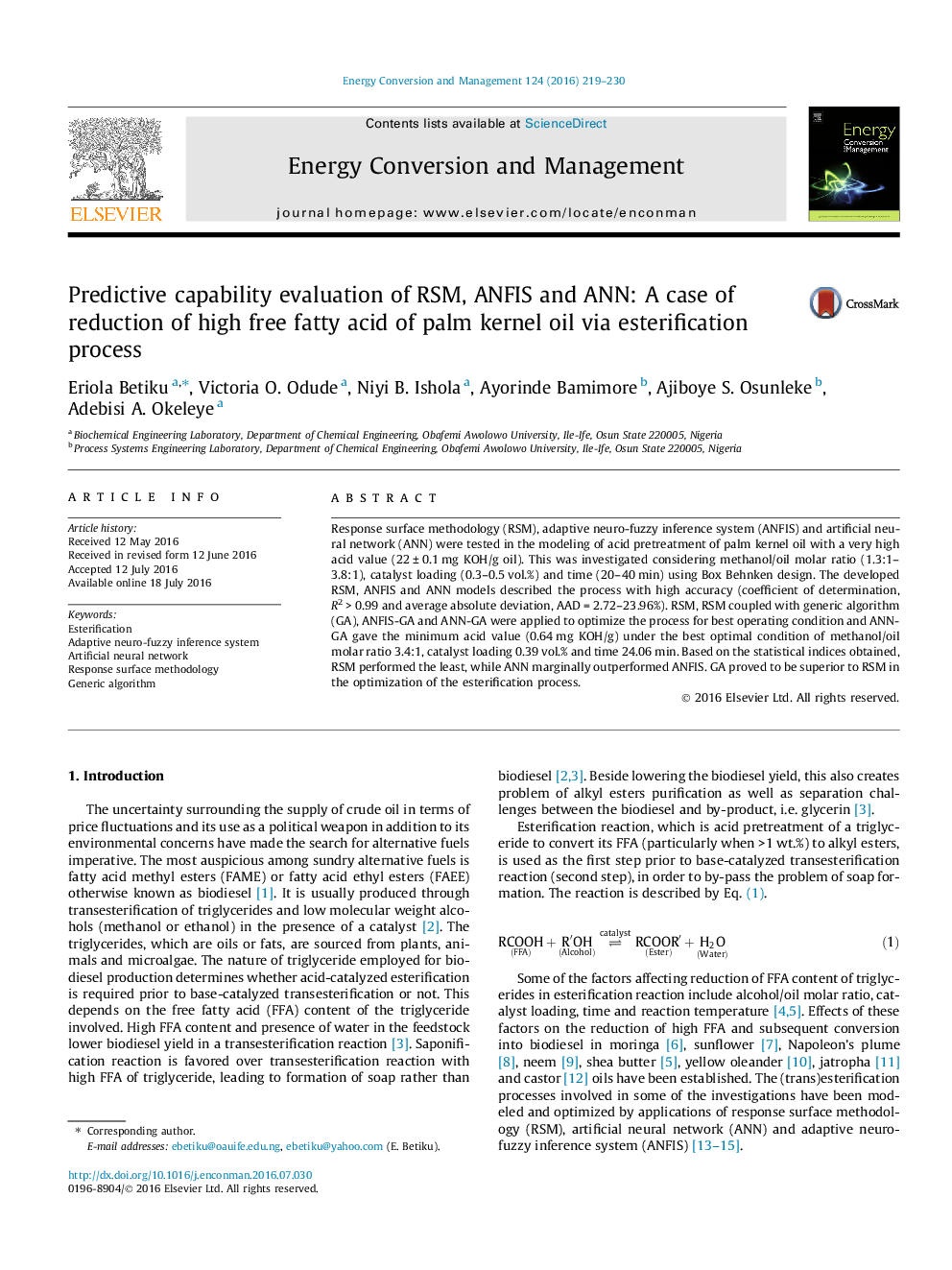| Article ID | Journal | Published Year | Pages | File Type |
|---|---|---|---|---|
| 764981 | Energy Conversion and Management | 2016 | 12 Pages |
•The pretreatment of palm kernel oil with an acid was modeled via ANFIS, ANN and RSM.•The process was optimized using RSM and GA to minimize the acid value of the oil.•ANN, ANFIS and RSM models had R2 of 0.99580, 0.99420 and 0.99067, respectively.•Acid value of the oil was reduced from 22.1 to 0.67 mg KOH/g using ANN-GA.•The three modeling techniques are complementary to one another.
Response surface methodology (RSM), adaptive neuro-fuzzy inference system (ANFIS) and artificial neural network (ANN) were tested in the modeling of acid pretreatment of palm kernel oil with a very high acid value (22 ± 0.1 mg KOH/g oil). This was investigated considering methanol/oil molar ratio (1.3:1–3.8:1), catalyst loading (0.3–0.5 vol.%) and time (20–40 min) using Box Behnken design. The developed RSM, ANFIS and ANN models described the process with high accuracy (coefficient of determination, R2 > 0.99 and average absolute deviation, AAD = 2.72–23.96%). RSM, RSM coupled with generic algorithm (GA), ANFIS-GA and ANN-GA were applied to optimize the process for best operating condition and ANN-GA gave the minimum acid value (0.64 mg KOH/g) under the best optimal condition of methanol/oil molar ratio 3.4:1, catalyst loading 0.39 vol.% and time 24.06 min. Based on the statistical indices obtained, RSM performed the least, while ANN marginally outperformed ANFIS. GA proved to be superior to RSM in the optimization of the esterification process.
Graphical abstractFigure optionsDownload full-size imageDownload as PowerPoint slide
